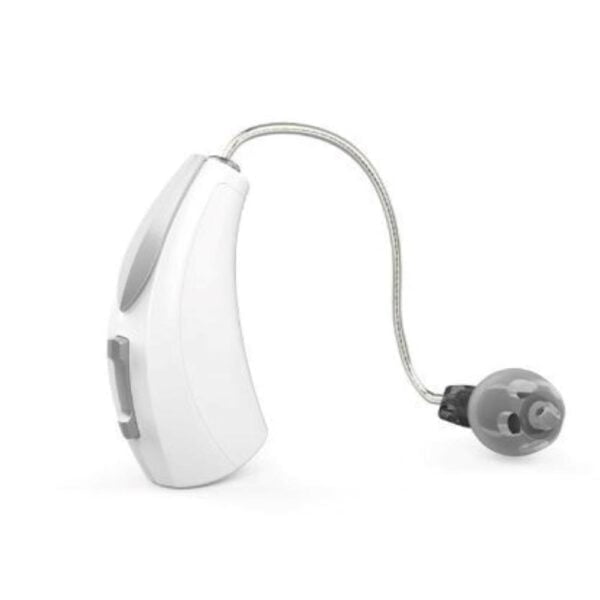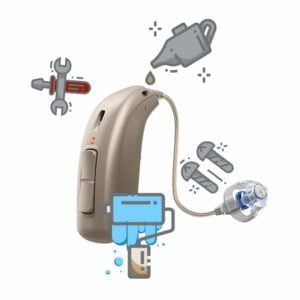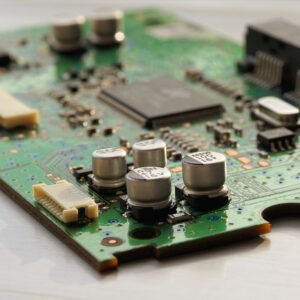Hearing aid domes play a crucial role in the performance and comfort of your hearing aids. These small, flexible pieces sit at the end of the hearing aid tube or speaker, fitting snugly in your ear canal. Choosing the right dome can significantly impact the quality of sound you receive and the overall effectiveness of your hearing aid.
In this guide, we’ll explore everything you need to know about hearing aid domes. From understanding what they are and why they’re important, to tips on choosing the right ones and instructions on how to replace them.
In This Article:
What Are Hearing Aid Domes?
1) Definition and Purpose
Hearing aid domes are small, flexible silicone or rubber pieces that attach to the end of your hearing aid’s tube or speaker. They fit snugly in your ear canal, creating a comfortable and secure seal. The primary purpose of hearing aid domes is to deliver amplified sound from the hearing aid into your ear while ensuring comfort and reducing feedback or whistling sounds.
2) Different Types of Domes
There are several types of hearing aid domes, each designed to address different hearing needs and preferences:
- Open Domes: These domes have multiple vents or openings, allowing natural sounds to enter the ear along with the amplified sounds from the hearing aid. They are ideal for people with mild to moderate hearing loss, as they provide a more natural listening experience and reduce the “occlusion effect” (the sensation of having your ears plugged).
- Closed Domes: Closed domes, also known as double domes, have fewer vents and provide a tighter seal in the ear canal. This type of dome is suitable for individuals with moderate to severe hearing loss, as it helps to amplify lower-frequency sounds more effectively and reduces feedback.
- Power (Double) Domes: Power domes, also known as double domes, are designed for people with severe to profound hearing loss. They provide the most secure seal and maximum amplification by blocking out more external noise and ensuring that the amplified sound is directed straight into the ear canal.
- Tulip (Semi Open) Domes: These have a unique shape that helps reduce feedback and improve comfort. They are suitable for a wide range of hearing losses and can provide a balance between the open and closed domes.
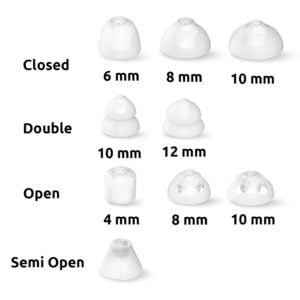
3) How Domes Work with Different Types of Hearing Aids
Hearing aid domes are compatible with various types of hearing aids, including behind-the-ear (BTE) and receiver-in-canal (RIC) models:
- Behind-the-Ear (BTE) Hearing Aids: In BTE hearing aids, the dome is attached to a thin tube that connects to the hearing aid behind the ear. The dome helps deliver the amplified sound directly into the ear canal while maintaining a comfortable and secure fit.
- Receiver-in-Canal (RIC) Hearing Aids: In RIC hearing aids, the receiver (or speaker) is placed inside the ear canal, and the dome covers the receiver. This setup allows for a more discreet and natural sound delivery, as the receiver is closer to the eardrum.
Choosing the right type of dome and ensuring it fits properly with your hearing aid model is essential for optimal performance and comfort. In the next section, we’ll discuss why hearing aid domes are important for overall hearing aid function and sound quality.
Why Hearing Aid Domes Are Important
1) Role of Domes in Enhancing Sound Quality
Hearing aid domes play a crucial role in enhancing the quality of sound that you receive through your hearing aids. By creating a secure seal in the ear canal, domes help to ensure that the amplified sound is directed properly into your ear without leaking out. This secure fit reduces the likelihood of feedback or whistling noises, which can be distracting and uncomfortable. Additionally, the right dome can help balance different frequencies, providing a clearer and more natural sound experience.
2) Importance for Overall Hearing Aid Function
The function of your hearing aid heavily depends on the effectiveness of the dome. A well-fitted dome ensures that the hearing aid performs optimally by maintaining the correct amplification levels. Domes that fit properly can significantly reduce the occurrence of sound leakage and ensure that the hearing aid’s amplification is used efficiently. This means that you’ll hear more of what you want to hear and less of the unwanted background noise, leading to a better overall hearing experience.
3) Improved Comfort and Fit
Comfort and fit are paramount when it comes to wearing hearing aids for extended periods. Hearing aid domes come in various sizes and types to accommodate different ear shapes and personal preferences. A well-fitted dome not only stays securely in place but also feels comfortable in the ear canal, reducing irritation and discomfort. Customising the fit with the right type of dome can make a significant difference in how comfortably you can wear your hearing aids throughout the day.
Choosing the Right Hearing Aid Domes
1) Factors to Consider
Selecting the right hearing aid dome is essential for achieving optimal hearing aid performance and comfort. Here are some key factors to consider:
- Hearing Loss Severity: The degree of your hearing loss will influence the type of dome you need. Open domes are typically suitable for mild to moderate hearing loss, while closed or power domes are better for moderate to severe hearing loss. These latter types provide more amplification by creating a tighter seal.
- Ear Canal Shape: Everyone’s ear canal is unique, so it’s important to choose a dome that fits well. Some people may find that certain types of domes (such as tulip or closed domes) fit better and are more comfortable in their ear canals.
- Lifestyle Needs: Your daily activities and lifestyle can also impact your choice. For instance, if you are frequently in noisy environments, a closed or power dome might help reduce background noise. On the other hand, if you prefer a more natural sound and are often in quieter settings, an open dome might be more suitable.
2) What Size Hearing Aid Dome Do I Need?
Determining the right size and type of dome involves a bit of trial and error, but here are some steps to help you get started:
- Consult Your Audiologist: Your audiologist can provide professional guidance based on your specific hearing loss and ear anatomy. They can also let you try different types and sizes of domes to see which ones work best for you.
- Start with the Manufacturer’s Recommendations: Hearing aid manufacturers often provide recommendations on dome types and sizes for their devices. This can be a good starting point for finding the right fit.
- Try Different Sizes: It’s important to try a few different sizes to see which fits most comfortably in your ear canal without causing irritation or discomfort.
- Consider Comfort and Sound Quality: Pay attention to how each dome feels in your ear and the quality of sound it delivers. The right dome should provide clear sound without feedback and feel comfortable for extended wear.
For a more detailed guide on choosing the right hearing aid domes, click here to read our blog on the topic.
How to Replace Hearing Aid Domes
1) Step-by-Step Guide on Replacing Domes
Replacing your hearing aid domes is a straightforward process, but it’s important to do it correctly to ensure optimal performance and comfort. Follow these steps:
- Gather Your Tools and Materials: You will need new hearing aid domes, a clean, dry cloth, and optionally, a small brush or pick to clean the receiver.
- Wash Your Hands: Ensure your hands are clean and dry to prevent any dirt or moisture from getting on the new domes or hearing aids.
- Remove the Old Dome: Gently pull the old dome off the receiver. It should come off easily, but if it’s stuck, you can use a small tool like a wax pick to help pry it off.
- Clean the Receiver: Before attaching the new dome, use a small brush or pick to remove any earwax or debris from the receiver. Wipe it with a clean, dry cloth.
- Attach the New Dome: Align the new dome with the receiver and press it firmly until it is securely in place. Make sure it’s attached properly to avoid it coming off in your ear.
- Check the Fit: Once the new dome is attached, insert the hearing aid into your ear to check the fit. It should feel comfortable and secure without causing any irritation.
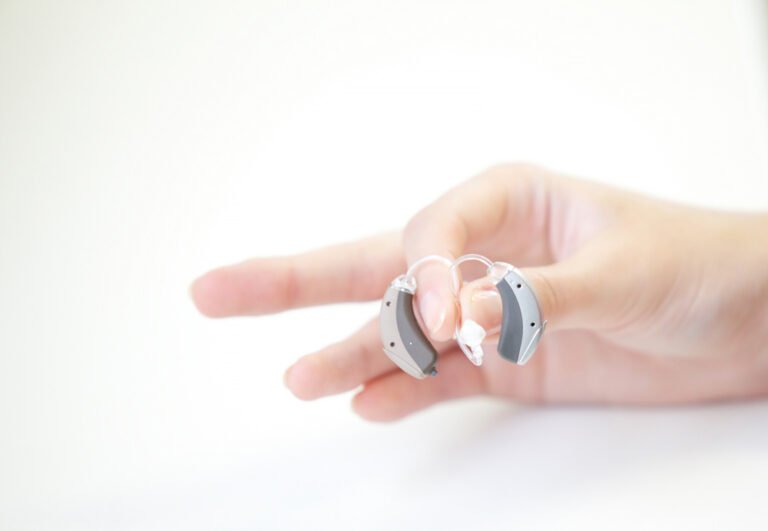
2) Common Mistakes to Avoid
- Not Cleaning the Receiver: Always clean the receiver before attaching a new dome to ensure it fits securely and works effectively.
- Improper Attachment: Make sure the new dome is properly attached to the receiver. A loose dome can come off in your ear, causing discomfort and potentially even an ear infection.
- Using Damaged Domes: Always inspect new domes before attaching them. If they are damaged or deformed, they won’t fit correctly and may affect sound quality.
For a more detailed guide on replacing hearing aid domes, click here to read our blog on the topic.
Maintenance and Care of Hearing Aid Domes
1) Cleaning and Maintaining Domes
Regular maintenance of your hearing aid domes is essential to ensure they stay in good condition and function effectively. Here’s how you can keep them clean and well-maintained:
- Daily Cleaning: After removing your hearing aids at the end of the day, gently wipe the domes with a dry, soft cloth to remove any earwax or debris. Never use water or cleaning solutions directly on the domes. Moisture can damage the electronic components of your hearing aids.
- Weekly Deep Cleaning: Remove the domes from the receivers and soak them in warm, soapy water for a few minutes. This helps to dissolve any earwax or debris. Use a small brush to gently clean the domes, then rinse them thoroughly with clean water. Ensure they are completely dry before reattaching them to the receivers.
- Use Cleaning Tools: Replace wax guards regularly to prevent earwax buildup. Use an air puffer to blow out any debris from the small openings in the domes.
2) When to Replace Domes
Regular inspection and timely replacement of your hearing aid domes are crucial for maintaining sound quality and comfort. Here’s when you should consider replacing them:
- Signs of Wear and Tear: Check your domes regularly for signs of wear, such as cracks, tears, or hardening. If you notice any damage, replace the domes immediately.
- Reduced Sound Quality: If you experience a decline in sound quality, it might be due to clogged or damaged domes. Try cleaning them first, and if the issue persists, replace them.
- Every Few Months: As a general rule, replace your hearing aid domes every 2-3 months, even if they appear to be in good condition. Regular replacement ensures optimal performance and hygiene.
3) Troubleshooting Common Issues
- Feedback and Whistling: Ensure the domes are properly fitted. A loose fit can cause feedback and whistling. Make sure the domes and wax guards are clean and free of debris.
- Discomfort: If the domes feel uncomfortable, you might need a different size or type. Consult your audiologist for recommendations. Check for any damage that might be causing discomfort and replace the domes if necessary.
- Sound Quality Issues: Ensure the domes are clean and free of wax buildup. If cleaning doesn’t resolve the issue, replace the domes to restore sound quality.
Conclusion
Taking good care of your hearing aid domes is key to getting the best performance and longest life out of your hearing aids. Regular cleaning, proper maintenance, and timely replacements ensure that you continue to enjoy clear sound and comfortable wear.
At Hearing Aid Accessories, we’re here to help you find the perfect domes for your hearing aids. We offer a wide range of high-quality options, from open and closed domes to power domes, tailored to fit your needs. Click the button below to explore our selection and discover the best domes for your hearing aids.

